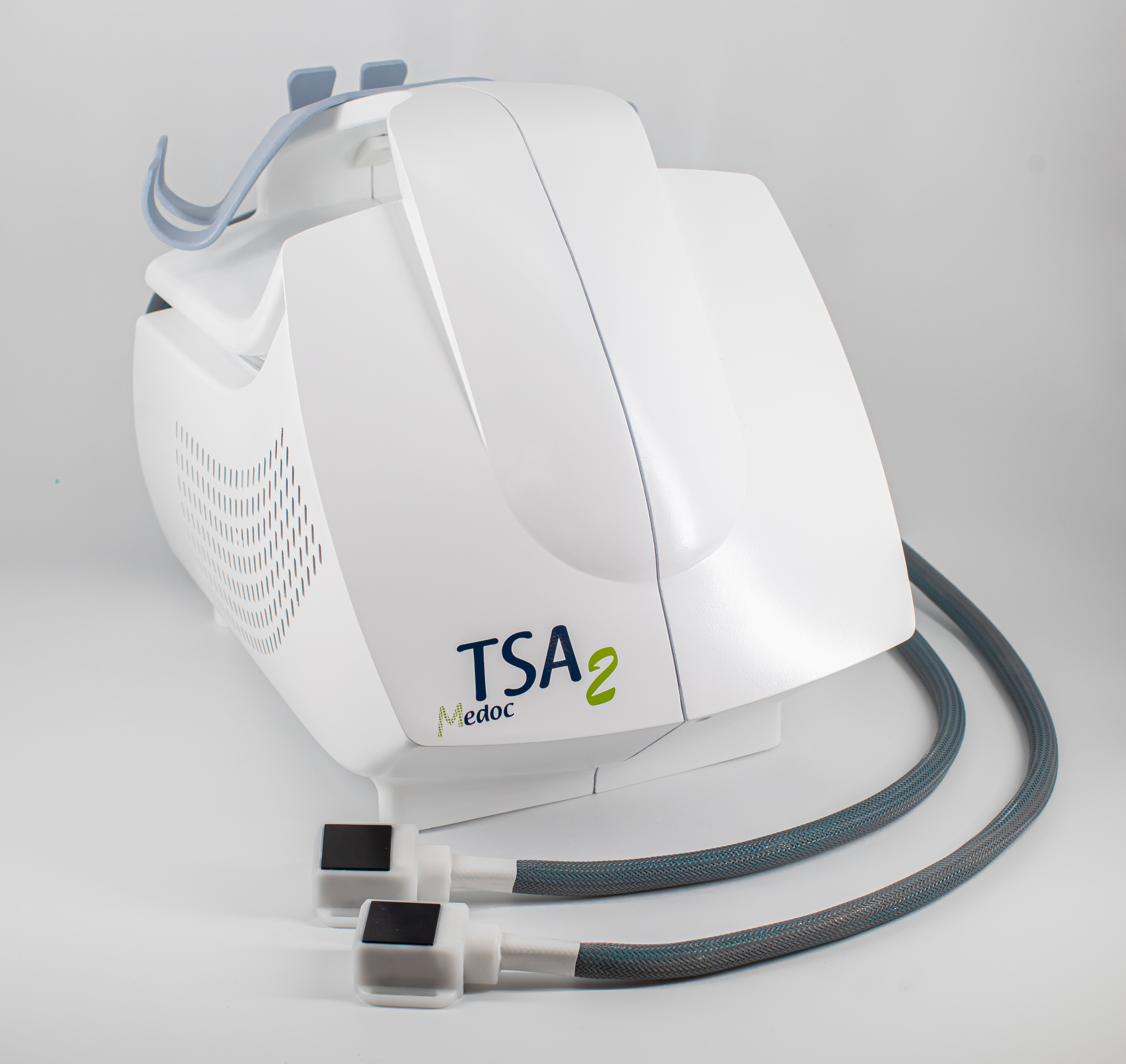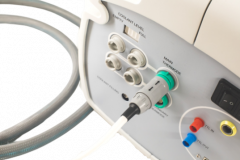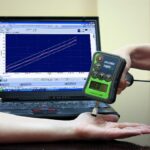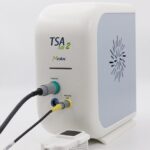The Latest Advance in Thermal Pain Stimulation from Madoc – TSA2
The Latest Advance in Thermal Pain Stimulation
Quantitative Sensory Testing (QST) is a valuable method for diagnosing peripheral nervous system disorders, including chronic pain and pain related to various diseases, such as Diabetes and CRPS. QST essentially determines the sensation and pain thresholds for cold and warm temperatures, and the vibration sensation threshold by stimulating the skin and comparing the results to normative values built in the software. When the stimulus activates stimuli-specific receptors; the nerve fibers that innervate the receptors communicate the stimuli message to the central nervous system, where feeling occurs.
The TSA2 System is the latest advance in Thermal Pain Stimulation; offering enhanced precision in a robust, portable device.
New software capabilities offer a tool for static and dynamic QST, as well as the most sophisticated of research protocols, run from external platforms.
For clinicians
For researchers
Contact product specialist at Cephalon
TSA Thermode (probe) active area
30 mm × 30 mm (standard)
24 mm x 24 mm CHEPS
16 mm × 16 mm
30 mm × 30 mm fMRI
24 mm x 24 mm fMRI
16 mm × 16 mm fMRI
GSA (intra vaginal)
Intra oral / clitoral
Temperature range:
0 – 53 °C (CHEPS 0 – 55 °C)
Baseline temperature:
0 – 45 °C, programmable
Rate of temperature change:
(standard) 0.1 – 13 °C/sec
(CHEPS) heating up to 70°C/sec, cooling down to 40°C/sec
External Control programming capability
Rapid thermal stimulation
Standard thermodes rates- up to 13°C/sec
CHEPS heating up to 70°C/sec, cooling down to 70°C/sec
Single and Dual Thermode configurations
Upgradeable for the fMRI imaging environment
CHEPS for TSA2
Enables heat and cold evoked potentials testing
Suitable for phasic temporal summation
Wide temperature range – from 0 to 55 °C








